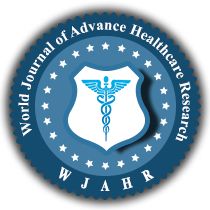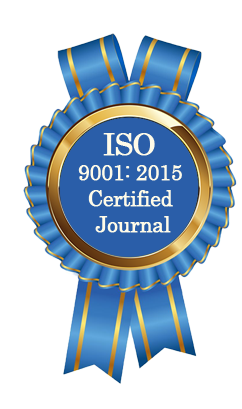| All | Since 2020 | |
| Citation | 105 | 60 |
| h-index | 4 | 4 |
| i10-index | 3 | 2 |
WJAHR Citation 
Login
News & Updation
Best Article Awards
World Journal of Advance Healthcare Research (WJAHR) is giving Best Article Award in every Issue for Best Article and Issue Certificate of Appreciation to the Authors to promote research activity of scholar.
Best Article of current issue
Download Article : Click here
Indexing
Abstract
ASSESSMENT OF PERCENTAGE AND RISK FACTORS OF URINARY INCONTINENCE AMONG SAMPLE OF POST-MENOPAUSAL WOMEN ATTENDING OUT-PATIENT CLINIC OF BAGHDAD MEDICAL CITY. IRAQ 2024
*Marwa Basil Shukur and Dr. Batool Ali Hassan
ABSTRACT
Background: Urinary incontinence is common among postmenopausal women. It is a debilitating condition with impact on physical and psychological aspect of life. Aim: determine the percentage, significant association and risk factors of urinary incontinence among sample of postmenopausal women. Methods: This cross-sectional study was conducted at Baghdad Teaching Hospital during the period from 1st February to end of July 2024. It included 300 postmenopausal women who were attending the out-patients clinic of this hospital for different pathological causes. A structural questionnaire was used to collect data about the occurrence of incontinence, duration, demographic, clinical and obstetrical characteristics. Results: Out of 300 included women, 214 (71.33%) had urinary incontinence. The mean duration of urinary incontinence was 4.20±5.68years. In more than two-thirds (70.56%) of included women, there was a mixed type. However, 12.15% and 17.20% of the women had stress and urge type, respectively. Body mass index was higher in women with urinary incontinence with a significant difference. Early marriage, high number of gravida (>10) and parity (6-10), recurrent urinary tract infection, presence of comorbidities, drugs such as antihypertensive, moderate caffeine intake and hormonal replacement therapy were risk factors. Conclusions: The percentage of urinary incontinence among postmenopausal women was more than two- third which is considered high compared with the global prevalence. Mixed type (stress and urge) is the most common type accounting for more than two-third of affected women. This demonstrate the need for health educational strategies to prevent, screen and proper management.
[Full Text Article] [Download Certificate]
